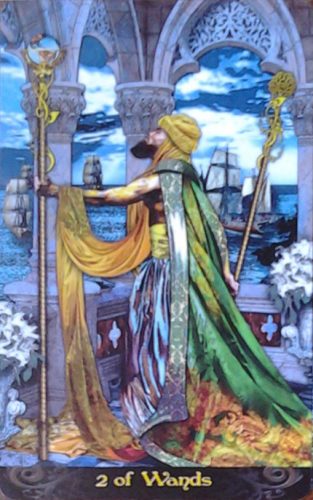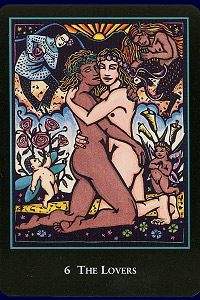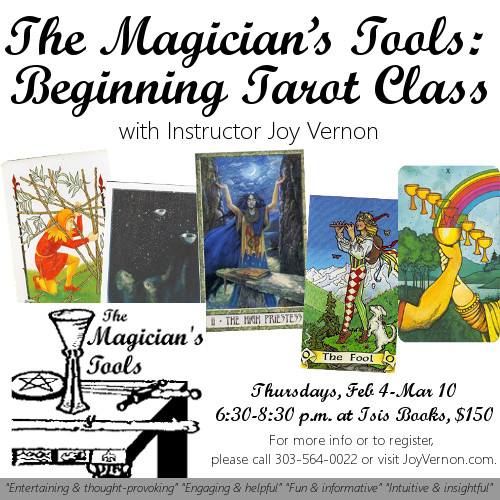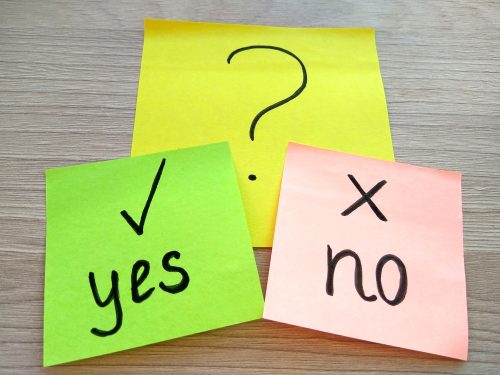
With thousands of tarot decks in print, plus used and collectible decks readily available online and in used book stores and metaphysical stores around the world, buying a tarot deck is a daunting challenge. Where do you start?
I’ve been teaching tarot for twenty-two years and have developed some clear deck-selecting guidelines for my students. The most important thing is to find a deck that appeals to you and that sparks meaning for you. But if you’d like to narrow it down a bit more, follow my five rules and take a look at some of the decks I recommend.
I first wrote on this subject exactly three years ago today. There are so many decks published every year, and although I’m not really a collector (I have a good size collection, but I’m not a true collector, nor am I knowledgeable about every deck that comes out, the way some people are), I thought I’d try to update this post to reflect some of the new decks. Also, I wanted to rephrase what in my previous article were suggestions and make them rules for students taking my class. Very simply, decks that follow these rules can be used with every exercise in class, and decks that don’t follow these rules can’t, forcing students to miss out.
Joy’s Rules for Choosing a Tarot Deck for Class
- You cannot use a Rider-Waite-Smith deck or direct clone (identical artwork). Decks that follow the Rider Waite Smith details, however strictly, but are not exact copies are acceptable, as are RWS inspired or derived (very similar artwork). Why this rule? Because while the Rider Waite Smith deck is the grandmother of all illustrated tarot decks, it has gained an iconic position and I have consistently observed students who believe that there is some kind of right, correct, true or absolute meaning to the imagery and symbols. Nothing could be further from the truth. In order to learn how to actually read the cards, one must release all expectations of pre-defined card meanings and dig into the artwork itself to discover the truth of the individual card and how it relates to querent, question, and the other cards in the spread. I do believe that everyone should be familiar with the RWS deck and be able to clearly picture each of its 78 images in the mind, but I don’t believe it needs to be anyone’s first deck. Also, I really prefer to have as large a variety of decks as possible in class so that participants can compare different decks and different images.For the beginning tarot class that I teach, I have certain requirements for student decks.
- The deck must have illustrated or scenic pips. There are three general classes of decks—unillustrated pips, moody or atmospheric pips, and illustrated or scenic pips. The pips are the numbered cards of the Minor Arcana—cards 1 through 10 of each suit. Unillustrated pips are the closest to playing cards—the image on the card will include the correct number of suit emblems, and perhaps some vines and flowers or other very simple decoration. But there will be very little color, and no background, environment, or anything else to give you a sense of the card. These types of cards will usually be read based on memorized meanings, the matching card from an illustrated deck, correspondences of suit and number, scrying on the image, and/or close analysis of the minute details of the limited symbolism. Moody pips are cards that include the correct number of suit emblems, but also have an environment or background indicated, or use color to create a sense of the emotional atmosphere of the card. These decks seem more likely to have keywords on the cards. These can be read like the unillustrated pips, but adding in the emphasis of the keyword and the emotional feel of the illustration. Fully illustrated pips have scenes in which a person or animal is doing something or otherwise actively engaged in the environment. The correct number of suit emblems may or may not be represented, although usually the suit and number will be indicated in the border of the card. These decks sometimes do and sometimes don’t have keywords (personally I prefer no keywords). Fully illustrated pips can be read using any of the methods of the unillustrated pips or moody pips, but more usually are read like a story book, describing a sequence of events based on what the reader sees in the illustration.
- The deck must have the suit emblems incorporated into the scene. My teaching methods pay special attention to how the suit emblems are incorporated into the scene—you can still use most of my techniques on decks that don’t include the suit emblems, but to practice all of what I teach, please get a deck that incorporates the wands, cups, swords and pentacles into the scene. Having those suit emblems incorporated into the border of the card or just hovering above the scene doesn’t count. The suit emblems should be part of the action of the scene.
- The deck can’t pull heavily from symbol systems or stories that you are not already familiar with. These symbol systems might include mythology, history, geography, or esoteric systems (such as qabalah, astrology, alchemy, etc). Don’t get the Whimsical Tarot if you don’t recognize the nursery rhymes and fairy tales it pulls from. Don’t get a deck based on King Arthur if you aren’t knowledgeable about the stories and characters portrayed in those legends. Don’t get the Tarot of St. Petersburg if you’re not a student of Russian history and politics. Why? Because you are getting a starter deck, and you will become hopelessly mired in confusion if you are trying to learn the system of tarot and also the unique stories of the deck. There are many decks that incorporate some mythology or esotericism into the images without relying heavily on it—Robert Places’s Alchemical Tarot has clear enough scenes that it can be read without any knowledge of alchemy (and learning the basics of that art and science will take your readings to new levels). Likewise, the DruidCraft deck draws from Celtic mythology, but with the exception of a few odd symbols and curious happenings in the background of the scenes, the images are clear enough to read without knowledge of the related myths. I have been using the Legacy of the Divine as my client deck for several years—people have told me that the book that goes with the deck has wonderful information on the fantasy history of the deck’s post-apocalyptic universe—I imagine I’d love the book if I read it, but I never have and have no problem reading the scenes on the cards effectively. If you already are well-versed in the specialty of the deck, then go ahead and use it—you will have the opportunity to apply your knowledge, experience, and hard earned study to your new craft.
- The deck does not have to follow the RWS lineage. In the past students have misinterpreted my requirements to mean that the deck needs to follow the RWS artistic lineage. I was teaching a class one year and pulled out the Universal Fantasy deck (a wonderful, imaginative deck with beautiful artwork, published by Lo Scarabeo). One student gasped, then said politely, “Um. That deck doesn’t follow the RWS illustrations.” I replied, “That’s ok.” “Oh!” she said. To this day I don’t exactly understand what happened, but I believe that she had been under the impression that they were required to use a RWS lineage deck. Not at all! I encourage as much variety as possible.
Some more recent decks that are well worth considering are the following. Please forgive me for not including your favorite deck—I would love it if you would include it in the comments! These are all (with one exception) decks that are in my personal collection (or an earlier edition is), so that limits the list severely. This list includes my personal favorite decks from the past few years, decks that people in my classes enjoy using, and decks that I see show up a lot in the Denver Tarot Meetup.
Here is my list of recent decks (in alphabetical order):
1. Chrysalis Tarot, U.S. Games, Holly Sierra/Toney Brooks, 2014
2. Fountain Tarot, Self-Published, Jonathan Saiz/Jason Gruhl/Andi Todaro, 2015

3. Japaridze Tarot, U.S. Games, Nino Japaridze, 2014

4. Sacred Isle Tarot, Self-Published, David Higgins, 2014

5. Tarot de St. Croix, Devera Publishing, Lisa de St. Croix, 2014
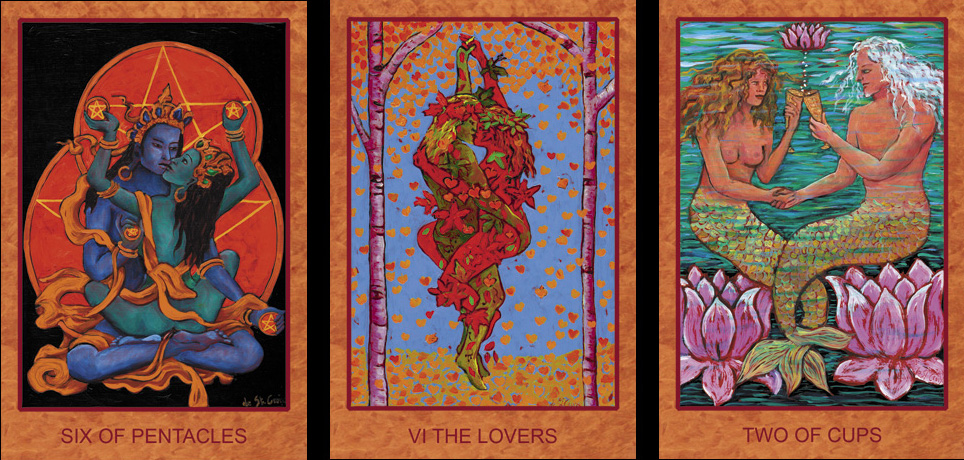
6. Tarot Illuminati, Llewellyn, Erik C. Dunne/Kim Huggens, 2013
7. Tarot of Dreams reprint, U.S. Games, Ciro Marchetti, 2015
8. Tarot of the Sevenfold Mystery, Hermes, Robert M. Place, 2013

9. Witches Tarot, Llewellyn, Mark Evans/Ellen Dugan, 2012

10. World Spirit Tarot reprint, Self-Published, Lauren Onca O’Leary, 2016
This was my list from January 2013 (in publication date order):
- Morgan Greer, US Games, Lloyd Morgan/Bill Greer, 1979
- Sacred Rose, US Games, Johanna Gargiulo-Sherman, 1980
- Motherpeace, US Games, Karen Vogel/Vicki Noble, 1981
- Tarot of the Old Path, AGMüller, Sylvia Gainsford/Howard Rodway, 1990
- Robin Wood, Llewellyn, Robin Wood, 1991
- Druidcraft, St. Martin’s, Will Worthington/Stephanie Carr-Gomm & Philip Carr-Gomm, 2005
- Alchemical Tarot: Renewed, Hermes, Robert Place, 2007
- Legacy of the Divine, Llewellyn, Ciro Marchetti, 2009
- Lo Scarabeo, Lo Scarabeo, Anna Lazzarini/Mark McElroy, 2007
- Steampunk, Llewellyn, Aly Fell/Barbara Moore, 2012
I hope this inspires you to take up tarot, buy a new deck, or sign up for a tarot class!
_________________________________________________
Joy Vernon is widely recognized by tarot professionals as an expert tarot teacher and respected community leader. With over twenty years’ experience teaching energetic and esoteric modalities, Joy brings expertise and practiced familiarity to her specialty of esoteric tarot, which layers astrological and qabalistic symbolism onto the traditional tarot structure. Under her leadership, the Denver Tarot Meetup has grown into the most active and one of the largest tarot-specific meetups in the world. Joy works as a psychic and teacher at Isis Books. To learn more, please visit JoyVernon.com.
© 2016 by Joy Vernon. All rights reserved.


